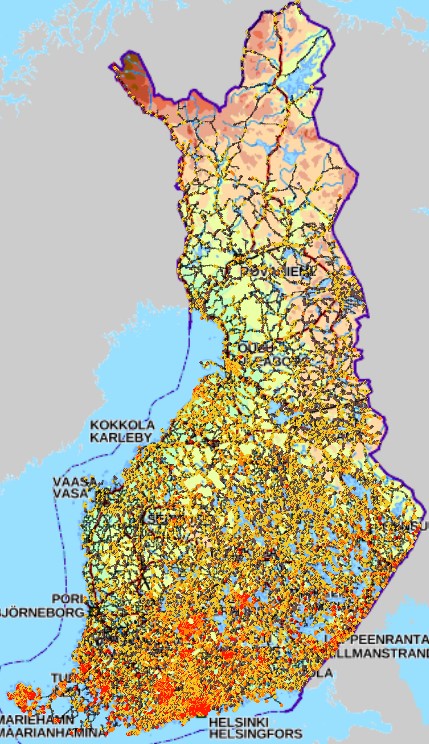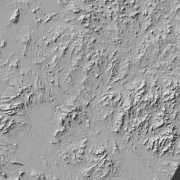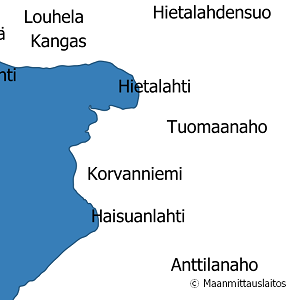dataset
Type of resources
Available actions
Topics
Keywords
Contact for the resource
Provided by
Years
Formats
Representation types
Update frequencies
status
Service types
Scale
Resolution
-

FIN Aineiston tarkoituksena on: -Identifioida tie- ja rata-alueet, joiden varrella esiintyy uhanalaisia ja silmälläpidettäviä lajeja -Identifioida tie- ja rata-alueet, joiden varrella esiintyy hyviä elinvoimaisia niittyindikaattorilajeja (hyönteisten mesi- ja ravintokasveja) -Identifioida tie- ja rata-alueet, joiden varrella esiintyy suojelualueita -Identifioida tie- ja rata-alueet, joiden varrella esiintyy komealupiinia tai kurtturuusua -Identifioida tie- ja rata-alueet, joiden varrella esiintyy komealupiinia tai kurtturuusua uhanalaisten lajien lisäksi -> Löytää herkät alueet ja paikallistaa vieraslajien uhka Tieto esitetään 1 kilometrin ruuduissa. Aineistosta on julkaistu kaksi erillistä versiota. -VaylanvarsienVieraslajitJaArvokkaatElinymparistot_avoin: Avoin versio, jonka lajitietoa on karkeistettu mahdollisista herkistä lajeista johtuen. Aineisto kuuluu SYKEn avoimiin aineistoihin (CC BY 4.0) ja sitä saa käyttää lisenssiehtojen mukaisesti -VaylanvarsienVieraslajitJaArvokkaatElinymparistot_kayttorajoitettu: Alkuperäinen karkeistamaton versio. Tämä versio on vain viranomaiskäyttöön eikä kyseistä aineistoa saa jakaa Aineistosta on tehty tarkempi menetelmäkuvaus https://geoportal.ymparisto.fi/meta/julkinen/dokumentit/VierasVayla_Menetelmakuvaus.pdf sekä muuttujaseloste https://geoportal.ymparisto.fi/meta/julkinen/dokumentit/VierasVayla_VariableDescription.xlsx ENG The purpose of the material is to: -Identify road and rail areas that have nearby observations of endangered and near threatened species -Identify road and rail areas with good meadow indicator plant species -Identify road and rail areas along which there are protected areas -Identify the road and rail areas along which there are observations of Lupinus polyphyllus or Rosa rugosa observations -Identify the road and rail areas along which there are Lupinus polyphyllus or Rosa rugosa observations in addition to sensitive species -> Finds sensitive areas and identify the overall threat of alien species The data is presented in 1-kilometer square grid cells. There are two separate versions of the data. -VaylanvarsienVieraslajitJaArvokkaatElinymparistot_avoin: Open access version, in which its species-related parts have been simplified due to data restriction issues. The material belongs to Syke's open materials (CC BY 4.0) and may be used in accordance with the license terms. -VaylanvarsienVieraslajitJaArvokkaatElinymparistot_kayttorajoitettu: Original version. This version is only for official use and the material in question may not be shared. A more precise description about the data procedures can be found from (In Finnish) https://geoportal.ymparisto.fi/meta/julkinen/dokumentit/VierasVayla_Menetelmakuvaus.pdf Furthermore, all the variables in the data are explained in this bilingual variable description https://geoportal.ymparisto.fi/meta/julkinen/dokumentit/VierasVayla_VariableDescription.xlsx This dataset was updated with the newest species observations on 10/2023 and 11/2024 Process code for this can be found from https://github.com/PossibleSolutions/VierasVayla_SpeciesUpdate
-
KUVAUS: Karttataso sisältää sekajätteen keräysalueet, jotka tulevat voimaan kuudessa vaiheessa 31.12.2029 mennessä, sekä nykyisen voimassa olevan sekajätteen keräysalueen. PÄIVITYS: Satunnainen (vain tarvittaessa). YLLÄPITOSOVELLUS: Tampereen kaupungin tiedostopalvelin ja PostGIS-tietokanta KOORDINAATTIJÄRJESTELMÄ: Aineisto tallennetaan ETRS-GK24FIN (EPSG:3878) tasokoordinaattijärjestelmässä GEOMETRIA: vektori (alue) SAATAVUUS: Aineisto on tallennettu Postgis-tietokantaan. JULKISUUS: Aineisto on nähtävillä julkisesti kaikille käyttäjille Oskari-karttapalvelussa. TIETOSUOJA: Aineistoon ei liity tietosuojakysymyksiä. AINEISTOSTA VASTAAVA TAHO: Tampereen kaupunki, Alueellinen jätehuoltolautakunta, jatehuoltolautakunta@tampere.fi
-
The Baltic Sea Pressure Index is a calculation of quantity and spatial distribution of potential cumulative impacts on the Baltic Sea. The BSII is based on georeferenced datasets of human activities (36 datasets), pressures (18 datasets) and ecosystem components (36 datasets), and on sensitivity estimates of ecosystem components (so-called sensitivity scores) that combine the pressure and ecosystem component layers, created in <a href="http://www.helcom.fi/helcom-at-work/projects/holas-ii" target="_blank">HOLAS II</a> project. The assessment can be applied with a focus on pressures only by using the Baltic Sea Pressure Index (BSPI) which shows the anthropogenic pressures/human activities in the defined assessment units without including ecosystem components. The BSPI however includes a weighting component in order to grade the effect of the pressures on the ecosystem in a generalized perspective. Cumulative impacts are calculated for each assessment unit (1 km2 grid cells) by summing all impacts occurring in the unit. All datasets and methodologies used in the index calculations are approved by all HELCOM Contracting Parties in review and acceptance processes. This dataset covers the time period 2011-2016. Please scroll down to "Lineage" and visit <a href="http://stateofthebalticsea.helcom.fi/cumulative-impacts/" target="_blank">State of the Baltic Sea website</a> for more info.
-
This dataset contains integrated eutrophication status assessment 2011-2016. The assessment is done using the HEAT 3.0 by combining assessment unit-specific results from various indicators by three MSFD criteria groups (C1: Nutrient levels, C2: Direct effect, C3: Indirect effect). The assessment is done on HELCOM Assessment Unit level 4: HELCOM Subbasins with coastal WFD water type or water bodies. The HEAT 3.0 has been applied for open sea assessment units using HELCOM core indicators and for coastal areas using national WFD indicators. In case of Denmark, the WFD results were used directly, displaying different classification as obtained from HEAT. For more information about the methodology, see the State of the Baltic Sea report and HELCOM Eutrophication assessment manual. Attribute information: "HELCOM_ID": ID of the HELCOM Level 4 Assessment unit "Country": Country/ Opensea "level_2": Name of the HELCOM Level 2 Assessment unit "Name": Name of the HELCOM Level 4 Assessment unit "Area_km2": Area of assessment unit "C1_N": MSFD criteria 1, number of indicators used for calculating Eutrophication Ratio (ER) "C1_ER": MSFD Criteria 1, ER "C1_SCORE": MSFD Criteria 1, Confidence of ER "C2_N": MSFD Criteria 2, number of indicators used for calculating ER "C2_ER": MSFD Criteria 2, ER "C2_SCORE": MSFD Criteria 2, Confidence of ER "C3_N": MSFD Criteria 3, number of indicators used for calculating ER "C3_ER": MSFD Criteria 3, ER "C3_SCORE": Criteria 3, Confidence of ER "N": Number of criteria used for calculating overall ER "ER": Overall ER "SCORE": Status confidence "STATUS": Status classification (Good (classes 0-0.5 & 0.5-1.0), Not Good (classes 1.0-1.5, 1.5-2.0 & >2.0), Not assessed) "CONFIDENCE": Final confidence class (< 50% = low, 50-74 % = Moderate, = 75 % = High) "AULEVEL": Level of assessment units
-
Maatalousmaa vuonna 2021 aineisto kuvaa mahdollisimman kattavasti maankäytöltään maatalouteen kuuluvia alueita vuonna 2021, sisältäen sekä maataloustukia saavat alueet, että tukien ulkopuoliset alueet. Aineisto on koostettu käyttäen Ruokaviraston tuottamia perus- ja kasvulohkoaineistoja sekä Maanmittauslaitoksen tuottamaa maastotietokantaa. Peruslohkoaineisto on komission asetuksen 796/2004 ja neuvoston asetuksen (EY) N:o 1782/2003 20 artiklassa tarkoitettu viljelylohkojen tunnistusjärjestelmä. Järjestelmää käytetään EU:n pinta-alaperusteisen maataloustuen hallinnoinnissa. Aineisto käsittää vuoden 2021 peruslohkojen tilanteen 31.12.2021. Kasvulohkolla tarkoitetaan yhteen peruslohkoon kuuluvaa yhtenäistä aluetta, jossa kasvatat yhtä kasvilajia, useamman kasvilajin seosta tai jota kesannoidaan tai joka on erityiskäytössä. Yhdellä peruslohkolla voi olla yksi tai useampia kasvulohkoja. Kasvulohko voi kuulua vain yhteen peruslohkoon. Kasvulohkojen rajat ja samalla niiden pinta-alat voivat vaihdella peruslohkon sisällä vuosittain. Peltolohkorekisteristä on aineistoon otettu mukaan ne lohkot joihin yhdistyy kasvulohkoista tieto viljellystä kasvista. Aineistosta on tiputettu pois ei-maatalousaluetta olevat lohkot, esimerkiksi metsäiset alueet. Maanmittauslaitoksen Maastotietokanta on koko Suomen kattava maastoa kuvaava aineisto ja se koostuu erilaisista kohderyhmistä. Maastotietokannan Maatalousmaa -aineisto sisältää Maastotietokannan pellot, ja puutarhat. Niityt ovat erillinen kohdeluokka. Mammuttiprojektia varten MTK kohdeluokat Maatalousmaa (pellot ja puutarhat) ja Niitty yhdistettiin yhdeksi aineistoksi. Kohdeluokat on poimittu vuoden 2021 Maastotietokannasta. Kohdeluokat ja niiden kuvaukset löytyvät: https://www.maanmittauslaitos.fi/sites/maanmittauslaitos.fi/files/attachments/2018/03/Maastotietokohteet_0.pdf Peruslohkoaineistosta ja maastotietokannasta poimitut kohteet on yhdistetty siten, että maatalousmaa muodostetaan ensisijaisesti käyttämällä peruslohkoaineistosta poimittuja peruslohkoja. Tämän joukon ulkopuolelle jäävä maatalousmaa tulee maastotietokannasta. Aineistojen yhdistäminen on kuvattu tarkemmin tuotantokuvauksessa. https://geoportal.ymparisto.fi/meta/julkinen/dokumentit/maatalousmaa2021.pdf https://geoportal.ymparisto.fi/meta/julkinen/dokumentit/Metatietokuvaus_peltolohkorekisteri.pdf Aineisto kuuluu SYKEn avoimiin aineistoihin (CC BY 4.0).
-
KUVAUS: Osana Tampereen kaupungin luonnon monimuotoisuusohjelman päivitystä toteutettiin loka-marraskuussa 2024 kysely paikallisille luonto- ja ympäristöjärjestöille sekä lumo-asiantuntijoille. Kysely oli avoinna 31.10.-1.12.2024 ja se toteutettiin Fiilis-karttakyselytyökalulla. Kysymykset valmisteltiin Tampereen kaupungin ilmasto- ja ympäristöpolitiikan yksikössä. Kysely lähetettiin 18 yhdistykselle, joista 6 yhdistystä vastasi kyselyyn: Tampereen hyönteistutkijain seura ry, Tampereen 4H-yhdistys, Luontoliiton Hämeen piiri (Tampereen metsäryhmä), Suomen luonnonsuojeluliitto Pirkanmaan piiri ry, Pirkanmaan lintutieteellinen yhdistys, 1 muu, jonka nimi puuttui (johtui kyselyohjelman teknisestä häiriöstä). Kysely lähetettiin myös 25 paikalliselle asiantuntijalle, kuten tutkijoille, viheralan yrittäjille, naapurikuntien ympäristönsuojelun asiantuntijoille sekä muille kuin Tampereen kaupungin viranomaisille, joiden työ liittyy luonnon monimuotoisuuteen. 10 asiantuntijatahoa vastasi kyselyyn. KATTAVUUS: Tampere YLLÄPITO: Kyseessä on poikkileikkausaineisto (Aineisto ei päivity). KOORDINAATTIJÄRJESTELMÄ: Aineisto tallennetaan ETRS-GK24 (EPSG:3878) tasokoordinaattijärjestelmässä. GEOMETRIA: vektori (pisteitä ja alueita) SAATAVUUS: Aineisto on katsottavissa kirjautuneille käyttäjille Oskari-karttapalvelussa. AINEISTOSTA VASTAAVA TAHO: Tampereen kaupunki, Ilmasto- ja ympäristöpolitiikan yksikkö
-
This assessment was part of project Baltic ForBio funded by the Interreg Baltic Sea Region Programme (https://www.slu.se/en/departments/forest-economics/forskning/research-projects/baltic-forbio/). The project was carried out in 2017-2020. The harvesting potentials in Finland were calculated for the following assortments: • Stemwood for energy from 1st thinnings, pine • Stemwood for energy from 1st thinnings, spruce • Stemwood for energy from 1st thinnings, broadleaved • Stemwood for energy from 1st thinnings (smaller than pulpwood-sized trees), pine • Stemwood for energy from 1st thinnings (smaller than pulpwood-sized trees), spruce • Stemwood for energy from 1st thinnings (smaller than pulpwood-sized trees), broadleaved • Logging residues, pine • Logging residues, spruce • Logging residues, deciduos • Stumps, pine • Stumps, spruce. 1.1 Decision support system used in assessment Regional energywood potentials were calculated with MELA forest planning tool (Siitonen et al. 1996; Hirvelä et al. 2017). 1.2 References and further reading Anttila P., Muinonen E., Laitila J. 2013. Nostoalueen kannoista jää viidennes maahan. [One fifth of the stumps on a stump harvesting area stays in the ground]. BioEnergia 3: 10–11. Anttila P., Nivala V., Salminen O., Hurskainen M., Kärki J., Lindroos T.J. & Asikainen A. 2018. Re-gional balance of forest chip supply and demand in Finland in 2030. Silva Fennica vol. 52 no. 2 article id 9902. 20 p. https://doi.org/10.14214/sf.9902 Hakkila, P. 1978. Pienpuun korjuu polttoaineeksi. Summary: Harvesting small-sized wood for fuel. Folia Forestalia 342. 38 p. Hirvelä, H., Härkönen, K., Lempinen, R., Salminen, O. 2017. MELA2016 Reference Manual. Natural Resources Institute Finland (Luke). 547 p. Hynynen, J., Ojansuu, R., Hökkä, H., Siipilehto, J., Salminen, H. & Haapala, P. 2002. Models for predicting stand development in MELA System. Metsäntutkimuslaitoksen tiedonantoja 835. 116 p. Koistinen A., Luiro J., Vanhatalo K. 2016. Metsänhoidon suositukset energiapuun korjuuseen, työopas. [Guidelines for sustainable harvesting of energy wood]. Metsäkustannus Oy, Helsinki. ISBN 978-952-5632-35-4. 74 p. Mäkisara, K., Katila, M., Peräsaari, J. 2019: The Multi-Source National Forest Inventory of Finland - methods and results 2015. Muinonen E., Anttila P., Heinonen J., Mustonen J. 2013. Estimating the bioenergy potential of forest chips from final fellings in Central Finland based on biomass maps and spatially explicit constraints. Silva Fennica 47(4) article 1022. https://doi.org/10.14214/sf.1022. Natural Resources Institute Finland. 2019. Industrial roundwood removals by region. Available at: http://stat.luke.fi/en/industrial-roundwood-removals-by-region. Accessed 22 Nov 2019. Ruotsalainen, M. 2007. Hyvän metsänhoidon suositukset turvemaille. Metsätalouden kehittämiskeskus Tapio julkaisusarja 26. Metsäkustannus Oy, Helsinki. 51 p. ISBN 978-952-5694-16-1, ISSN 1239-6117. Siitonen M, Härkönen K, Hirvelä H, Jämsä J, Kilpeläinen H, Salminen O et al. 1996. MELA Handbook. 622. 951-40-1543-6. Äijälä, O., Kuusinen, M. & Koistinen, A. (eds.). 2010. Hyvän metsänhoidon suositukset: energiapuun korjuu ja kasvatus. Metsätalouden kehittämiskeskus Tapion julkaisusarja 30. 56 p. ISBN 978-952-5694-59-8, ISSN 1239-6117. Äijälä, O., Koistinen, A., Sved, J., Vanhatalo, K. & Väisänen, P. (eds). 2014. Metsänhoidon suositukset. Metsätalouden kehittämiskeskus Tapion julkaisuja. 180 p. ISBN 978-952-6612-32-4. 2. Output considered in assessment Valid for scenario: Maximum sustainable removal Main output ☒Small-diameter trees ☒Stemwood for energy ☒Logging residues ☒Stumps ☐Bark ☐Pulpwood ☐Saw logs Additional information Stemwood for energy from 1st thinnings. Part of this potential consists of trees smaller than pulpwood size. This part is reported as Small-diameter trees. Forecast period for the biomass supply assessment Start year: 2015 End year: 2044 Results presented for period 2025-2034 3. Description of scenarios included in the assessments Maximum sustainable removal The maximum sustainable removal is defined by maximizing the net present value with 4% discount rate subject to non-declining periodic total roundwood removals, energy wood removals and net incomes, further the saw log removals have to remain at least at the level of the first period. There are no sustainability constraints concerning tree species, cutting methods, age classes or the growth/drain -ratio in order to efficiently utilize the dynamics of forest structure. Energy wood removal can consist of stems, cutting residues, stumps and roots. According to the scenario the total annual harvesting potential of industrial roundwood is 80.7 mill. m3 (over bark) for period 2025-2034. In 2018 removals of industrial roundwood in Finland totaled 68.9 mill. m3 (Natural Resources… 2019). 4. Forest data characteristics Level of detail on forest description ☒High ☐Medium ☐Low NFI data with many and detailed variables down to tree parts. Sample plot based ☒Yes ☐No NFI sample plot data from 2013-2017. Stand based ☐Yes ☒No Grid based ☒Yes ☐No Multi-Source NFI data from 2015 (Mäkisara et al. 2019) utilized when distributing regional potentials to 1 km2 resolution. 5. Forest available for wood supply: Total forest area defined as in: FAO. 2012. FRA 2015, Terms and Definitions. Forest Resources Assessment Working Paper 180. 36 p. Available at: http://www.fao.org/3/ap862e/ap862e00.pdf. Forest and scrub land 22 812 000 ha Forest land 20 278 000 ha and scrub land 2 534 000 ha Forest area not available for wood supply Forest and scrub land 2 979 000 ha Forest land 1 849 000 ha and scrub land 1 130 000 ha Partly available for wood supply Forest and scrub land 2 553 000 ha (includes in FAWS, below) Forest land 1 149 000 ha and scrub land 1 404 000 ha. Forest Available for wood supply (FAWS) Forest and scrub land 19 833 000 ha Forest land 18 429 000 ha and scrub land 1 404 000 ha In MELA calculations all the scrub land belonging to the FAWS belongs to the category “Partly available for wood supply”, but there are no logging events on scrub land regardless or the category. 6. Temporal allocation of fellings Valid for scenario: Maximum sustainable removal Allocation method ☐Optimization based without even flow constraints ☒Optimization based with even flow constraints ☐Rule based with no harvest target ☐Rule based with static harvest target ☐Rule based with dynamic harvest target See item 3 above (max NPV with 4 % discount rate). 7. Forest management Valid for scenario: Maximum sustainable removal Representation of forest management ☐Rule based ☒Optimization ☐Implicit Treatments, among of the optimization makes the selections, are based on management guidelines (e.g. Äijälä etc 2014) 7.2 General assumptions on forest management Valid for scenario: Maximum sustainable removal ☒Complies with current legal requirements ☐Complies with certification ☒Represents current practices ☐None of the above ☐ No information available Forest management follows science-based guidelines of sustainable forest management (Ruotsalainen 2007, Äijälä et al. 2010, Äijälä et al. 2014). 7.3 Detailed assumptions on natural processes and forest management Valid for scenario: Maximum sustainable removal Natural processes ☒Tree growth ☒Tree decay ☒Tree death ☐Other? Tree-level models (e.g. Hynynen et al., 2002). Silvicultural system ☒Even-aged ☐Uneven-aged Click here to enter text. Regeneration method ☒Artificial ☒Natural Regeneration species ☐Current distribution ☒Changed distribution Optimal distribution may differ from the current one. Genetically improved plant material ☐Yes ☒No Cleaning ☒Yes ☐No Thinning ☒Yes ☐No Fertilization ☐Yes ☒No 7.4 Detailed constraints on biomass supply Volume or area left on site at final felling ☒Yes ☐No 5 m3/ha retained trees are left in final fellings. Final fellings can be carried out only on FAWS with no restrictions for wood supply. Constraints for residues extraction ☒Yes ☐No ☐N/A Retention of 30% of logging residues onsite (Koistinen et al. 2016) Constraints for stump extraction ☒Yes ☐No ☐N/A Retention of 16–18% of stump biomass (Muinonen et al. 2013; Anttila et al. 2013) 8. External factors Valid for scenario: Maximum sustainable removal External factors besides forest management having effect on outcomes Economy ☐Yes ☒No Climate change ☐Yes ☒No Calamities ☐Yes ☒No Other external ☐Yes ☒No
-

Hillshade (elevation model) is a raster dataset visualising the elevation of the terrain. There are five product versions available in which the pixel sizes are 2, 8, 32, 64, 128 and 512 metres. Pixel size 2 m has been produced of the dataset Elevation model 2 m. The other sizes have been produced of the dataset Elevation model 10 m. The material does not contain elevation values; it is a greyscale image that visualises the direction and steepness of hills. The product belongs to the open data of the National Land Survey of Finland.
-
This dataset represents the Integrated biodiversity status assessment for seals (grey seal, harbour seal and ringed seal). Status is shown in five categories based on the integrated assessment scores obtained in the tool. Biological quality ratios (BQR) above 0.6 correspond to good status. The status of the seals was assessed using four core indicators: population trends and abundance of seals, distribution of Baltic seals, nutritional status of seals, and reproductive status of seals. In the latter two only grey seals are considered for the 2018 State of the Baltic Sea report. The assessment is based on the one-out-all-out approach, i.e. the species reflecting the worst status in each assessment unit. This dataset displays the result of the integrated biodiversity status in HELCOM Assessment unit Scale 2 (Division of the Baltic Sea into 17 sub-basins). Attribute information: "HELCOM_ID" = ID of the HELCOM scale 2 assessment unit "level_2" = Name of the HELCOM scale 2 assessment unit "EcosystemC" = Ecosystem component analyzed "BQR" = Biological Quality Ratio "Conf" = Confidence of the assessment "Total_indi" = Number of indicators used "% of area assessed" = Share of the total assessed area "D1CX" = MSFD descriptor 1 criteria X "conf_D1CX" = Confidence for MSFD descriptor criteria X "Confidence" = Conifdence of the assessment ("high"/ "moderate"/ "low") "STATUS" = Status of the assessment (0-0.2 = not good (lowest score), 0.2-0.4 = not good (lower score), 0.4-0.6 = not good (low score), 0.6-0.8 = good (high score, 0.8-1.0 = good (highest score))
-

National Land Survey's geographic names are available as interfaces and files. Interfaces and file products comprise of place name products and map name products. The place name products include data about approximately 800,000 named places and their names in different languages. Data about place are among others place type, plane location and height above sea level, and data about names are among others the spelling that has been checked by the Institute for the Languages of Finland and language (Finnish, Swedish, Northern Sami, Inari Sami or Skolt Sami. In the place name products, every place and its name or names appear only once. The map name products contain the place names that have been selected for the National Land Survey's nine standard map products and information about the cartographical presentation of them. The information includes the location of the name on the map, for instance the coordinates of the left lower corner of the map text, the direction and bending of the text as well as typographical information, such as font type, size and colour. The name of a particular place, such as a river, can appear several times in the same map product. The product is a part of the open data of the National Land Survey.
 Paikkatietohakemisto
Paikkatietohakemisto